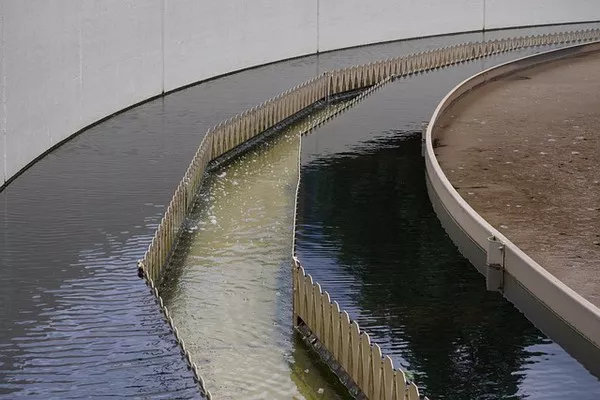In the quest for sustainable wastewater treatment solutions, reed bed sewage systems have emerged as a nature-based and cost-effective alternative to conventional methods. Utilizing the natural processes of wetland ecosystems, reed beds effectively treat wastewater while minimizing energy consumption and chemical use. This article explores how reed bed sewage systems work, their benefits, design considerations, and their role in advancing sustainable water management practices.
The Basics of Reed Bed Sewage Systems
Reed bed sewage systems, also known as constructed wetlands, mimic the natural filtration and purification processes of wetlands. They consist of shallow basins filled with different layers of substrate, gravel, sand, and specific wetland plants like reeds (Phragmites australis) or bulrushes (Typha spp.). Wastewater from homes, businesses, or communities is directed into these beds, where biological, physical, and chemical processes occur to break down pollutants and purify the water.
The typical components of a reed bed sewage system include:
Inlet Chamber: Where raw wastewater enters the system.
Distribution Network: Pipes or channels distributing wastewater evenly across the reed beds.
Reed Beds: Basins filled with layers of substrate where wetland plants grow.
Outlet Chamber: Collects treated water for discharge or further treatment.
Control Systems: Monitors and manages flow rates and system performance.
How Reed Bed Systems Work
The treatment process within reed bed sewage systems is driven by a combination of physical, biological, and chemical processes:
Physical Filtration: As wastewater flows through the reed bed, suspended solids settle out due to gravitational forces. The substrate and root mass of the plants act as filters, trapping particulate matter and organic substances.
Biological Degradation: Microbial communities established in the root zone of the wetland plants play a crucial role in breaking down organic pollutants such as nitrogen, phosphorus, and pathogens present in the wastewater. These microbes thrive in the oxygen-rich environment created by the plant roots.
Chemical Transformation: Wetland plants and associated microorganisms facilitate biochemical transformations that convert harmful substances into less toxic or inert forms. For instance, nitrification and denitrification processes convert ammonia and nitrate into nitrogen gas, which is released harmlessly into the atmosphere.
Plant Uptake: Some contaminants are taken up by the roots of the wetland plants and transformed or stored within the plant tissues, contributing to the overall purification of the wastewater.
Advantages of Reed Bed Sewage Systems
Reed bed sewage systems offer several advantages over traditional wastewater treatment methods:
Low Operational Costs: Once established, reed beds require minimal energy input and maintenance compared to mechanical treatment systems.
Energy Efficiency: They operate passively, relying on natural processes like gravity and biological activity, reducing reliance on external energy sources.
Low Chemical Dependency: Unlike chemical-intensive treatment methods, reed beds use biological processes, reducing chemical usage and minimizing environmental impact.
Aesthetic and Ecological Value: Reed bed systems enhance biodiversity by providing habitat for wildlife and contributing to the aesthetic appeal of the landscape.
Scalability and Adaptability: These systems can be scaled up or down based on the size and needs of the community, making them adaptable for rural and urban settings alike.
Design Considerations
Designing an effective reed bed sewage system requires careful consideration of several factors:
Hydraulic Loading: Calculating the volume and flow rate of wastewater to ensure proper treatment without overwhelming the system.
Substrate Composition: Selecting appropriate substrate materials (gravel, sand, organic matter) to promote optimal microbial activity and nutrient removal.
Plant Selection: Choosing wetland plants that thrive in the local climate and are effective in nutrient uptake and pollutant removal.
Sizing and Configuration: Determining the number, size, and arrangement of reed beds based on wastewater volume, treatment goals, and available space.
Maintenance Requirements: Establishing routine maintenance protocols for monitoring system performance, removing accumulated sludge, and managing plant growth.
Applications and Case Studies
Reed bed sewage systems have been successfully implemented worldwide, demonstrating their versatility and effectiveness in various applications:
Small-Scale Domestic Systems: Providing decentralized wastewater treatment solutions for individual households or rural communities.
Industrial Wastewater Treatment: Treating effluents from industries such as food processing, wineries, and breweries.
Municipal Wastewater Treatment: Integrating reed bed systems into existing treatment infrastructure to enhance nutrient removal and reduce operational costs.
Stormwater Management: Utilizing reed beds for treating urban runoff and improving water quality in retention ponds.
Conclusion
Reed bed sewage systems represent a sustainable and nature-based approach to wastewater treatment, leveraging the inherent capabilities of wetland ecosystems to purify water while minimizing environmental impact. By harnessing biological processes and natural filtration mechanisms, these systems offer a compelling alternative to conventional treatment methods. Moving forward, further research and technological advancements will continue to optimize the design, performance, and scalability of reed bed sewage systems, supporting the global transition towards more sustainable water management practices.

